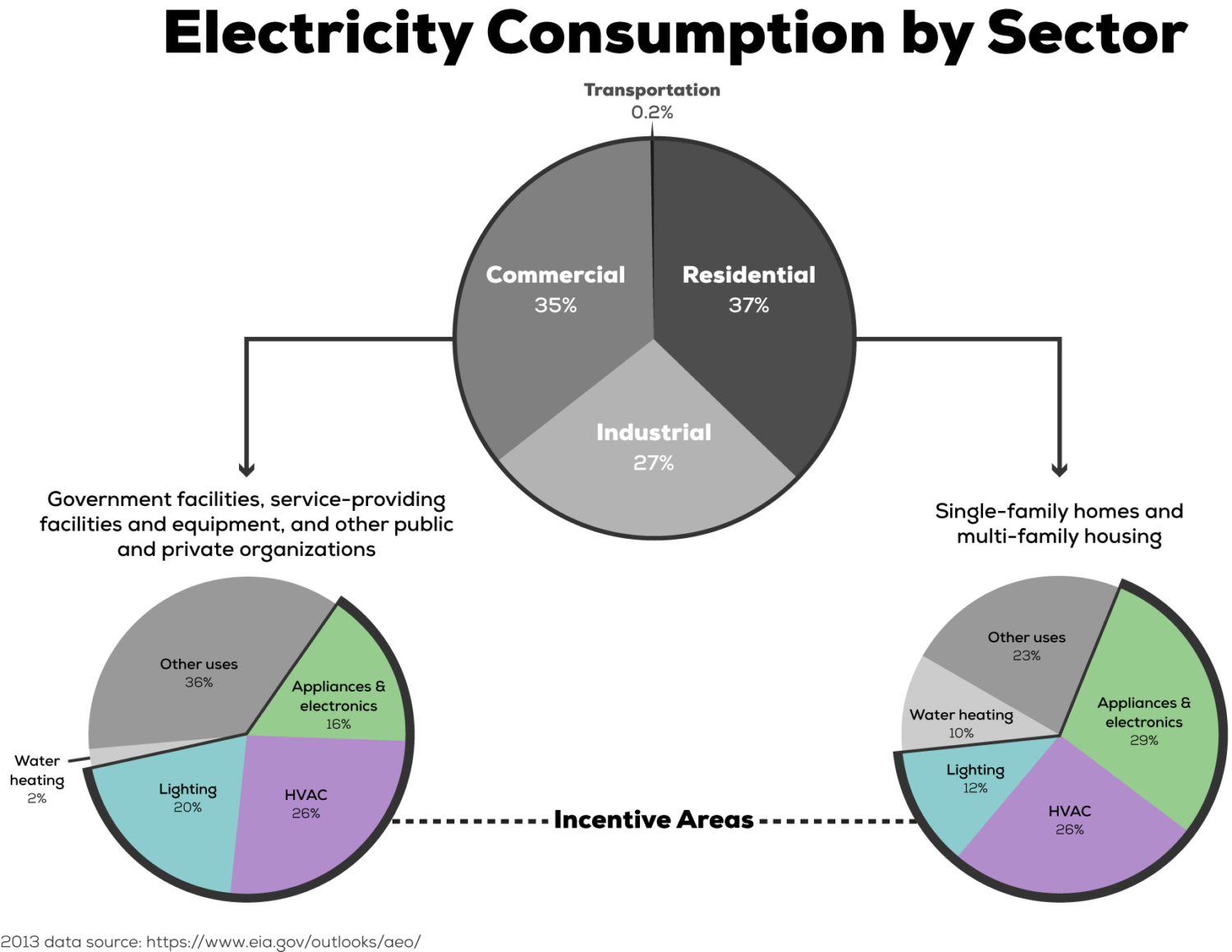Energy Rebates: Don’t Leave Money on the Table
-
Category
Innovation -
Posted By
Andrew Eckrich -
Posted On
Feb 13, 2018
When the electric grid was still in its infancy, electrical utility companies needed more people to use electricity to make a profit. They would therefore incentivize the purchase of electric vacuums, laundry machines, dish washers, water heaters, radiant floor heating systems, and so on. But in today’s world, we have so much electric demand that brownouts and blackouts have become increasingly common. As electric demand increases, modern utility companies find it more cost-effective to not build more and more power plants, but to incentivize energy efficiency – giving rise to energy rebates.
The goal of energy rebates is to save money while saving energy – incentivizing efficient equipment to the point that the equipment, when fully installed, costs the same as “standard” equipment. The efficient equipment then slashes your operational costs. According to a study by the U.S. Energy Information Administration, there is a lot of potential incentives based on consumption percentages.

The incentives from rebate-worthy items can affect all areas of MEPT:
- Mechanical – high-efficiency chillers, rooftop units, VRF systems, and building controls
- Electrical – LED lighting, lighting controls, variable frequency drives
- Plumbing – high-efficiency pumps and boilers
- Energy-efficient data center servers and HVAC Kitchen equipment is also incentivized
The Process:
As an HVAC engineer on a project, the process for making sure a client gets the most efficient equipment in their space starts from the very beginning – designing with the equipment in mind. How do you know which type of equipment is best for the client, or how do you prioritize which equipment is most important if budget is tight? Here, we optimize the best systems with the client’s budget. Once the design is fully developed, we can choose which type of incentive is the best for the project – prescriptive or custom.
Prescriptive: application is submitted within a 90-day window of installation or project completion
Custom: pre-approval and energy savings calculations are required beforehand, and then once the project is approved, equipment is purchased and construction can begin. A final application is required after completion which describes any changes to the project (and thus original calculations)
Just how much could you save?
- Incentives on new construction usually equals approximately $0.40/sf
- 72,000 sq. ft. elementary school, full lighting and HVAC upgrades, $36,500 prescriptive
- New High School Performing Arts Center (theater, stage, lighting, HVAC in just this area), $4,500 custom incentive
- 83,000 sq. ft. elementary school, $32,000 incentive custom
Schmidt Associates can help with energy rebates:
Sure, you can go through the rebate process yourself, but it can be a long and tedious one.
We can do it for clients in the fraction of the time, almost as if from muscle memory. We use our experience and internal software tools to streamline the process. The energy rebate money is available for owners, and Schmidt Associates can make the process cost-effective and painless. Contact us for help or further questions.




